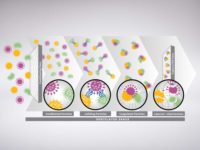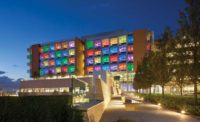Starting in December, the three-year initiative will be carried out by engineers at the University of Leeds with funding from the Engineering and Physical Sciences Research Council (EPSRC).
Infections originating in hospital are a serious and widespread problem, affecting around 10% of patients during their stay. There is increasing evidence that up to 20% of these infections are transmitted by an airborne route - at a cost of 100-200 million pounds a year in England alone.
The project will build on a recent successful study at St James's University Hospital in Leeds. This found that using ionizers to negatively charge air particles in an intensive care unit prevented all infections caused by the Acinetobacter pathogen. Immune to nearly all currently available antibiotics, Acinetobacter infections are a growing problem in hospitals and can be fatal in some groups of patients.
In the new project, the same team will set out to understand the science behind this success and provide a firm basis for future use of the technique. They will focus on the biological and physical processes associated with negative air ionization and airborne transmission of infection, and establish guidelines for the effective use of ionizers in hospital buildings.
Much of the research will be carried out in the university's state-of-the-art aerobiological test facility, which was part funded by EPSRC. The facility incorporates a 32m3 climatic chamber where temperature, humidity, and ventilation rate can be varied and controlled. The chamber enables researchers to mimic various clinical environments and perform a wide range of experiments involving aerosols doped with micro-organisms.
The project team is being led by Dr. Clive Beggs of the University of Leeds' Aerobiological Research Group.






